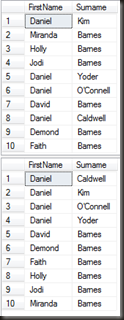SQL University: Advanced Indexing – Indexing Strategies
Right, I know it’s Friday and everyone’s tired and looking forward to the weekend, but I do need to finish off this indexing section and I’ll try to keep this short and interesting and hopefully keep everyone awake.
There’s no shortage of information available on how to create indexes. Hell, I’ve written a copious amount myself. Most of these many articles however are written from the point of indexing single queries. What you chose for a where clause, what has to go into the include to create the perfect index for this query. Now that’s all well and good, but I’ve never met a system that had only one query per table (maybe there is such a system out there, but I’ve never found it)
So what I’m going to try to do today is address the topic of a strategy for indexing. How to approach indexing, not for a single query, but for the system as a whole. I won’t be able to cover this in-depth, this is material worthy of an entire book chapter, if not an entire book, but I can at least touch on the essential portions.
Now, there’s two main positions that we could be in when considering indexing strategies for an entire system
1) A brand new system that’s still in development
2) An existing system that’s being used actively.
One at a time…
Indexing strategies for a brand new system
Start by choosing a good clustered index. What makes a good clustered index? Well, it depends 🙂
- http://www.scarydba.com/2011/04/04/sql-universityrecommendations-for-a-clustered-index/
- http://www.sqlskills.com/BLOGS/KIMBERLY/post/GUIDs-as-PRIMARY-KEYs-andor-the-clustering-key.aspx
- http://www.sqlskills.com/BLOGS/KIMBERLY/post/The-Clustered-Index-Debate-Continues.aspx
- http://www.sqlskills.com/BLOGS/KIMBERLY/post/Ever-increasing-clustering-key-the-Clustered-Index-Debateagain!.aspx
- http://www.sqlskills.com/BLOGS/KIMBERLY/post/The-Clustered-Index-Debate-again!.aspx
- http://www.sqlservercentral.com/articles/Indexing/68563/
- http://technet.microsoft.com/en-us/sqlserver/gg508879.aspx (video)
The clustered index is the base, it will affect each and every nonclustered index, and it’s not trivial to change once the system is in use, so chose carefully. I’m not saying another word on the subject of a clustered index, not today.
Once that’s done…











